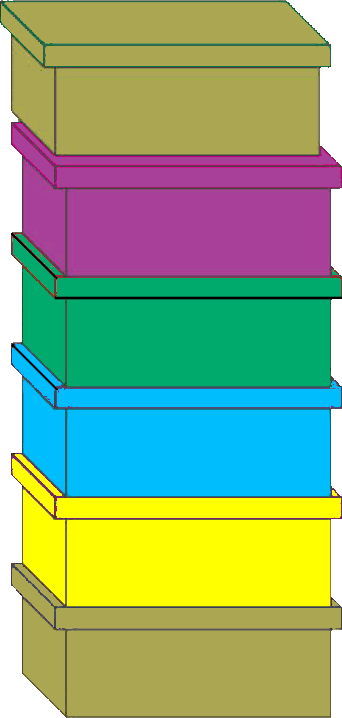Stacks
Chapter 17
Objectives
In this lecture, you will:
Learn about stacks.
Examine various stack operations.
Learn how to implement a stack as an array.
Learn how to implement a stack as a linked list.
Learn how to use a stack to solve problems like removing recursion.
Introduction
Stack: a data structure in which elements are added and removed from one end only.
Addition and deletion occurs only at the top of the stack.
Last in, first out (LIFO) data structure
Operations:
Push: to add an element onto the stack
Pop: to remove an element from the stack
| Coins | Trays | Boxes | Books |
|---|---|---|---|
 |
Stack Example
See the lecture video above for the full example.
Stack Interface
Array Stack
Array-Based Stack Implementation
The first element goes in the first array position, the second in the second position, etc.
The top of the stack is an index of the last element added to the stack.
Stack elements may be stored in an array, which is a random-access data structure.
- The stack element is accessed only through the top.
To track the top position, use a variable.
Can dynamically allocate an array.
Enables the user to specify the size of the array.
The
sizeattribute will hold the number of elements currently in the array.Therefore, we will use
size - 1as the top of the stack.The
capacityattribute will hold the maximum number of elements of the array before it needs to be resized.
See the lecture video above for the full example.
Empty Array-Based Stack
See the lecture video above for the full example.
Linked Stack
Linked Implementation of a Stack
Array only allows a fixed number of elements.
If the number of elements to be pushed exceeds the array size, the program may terminate.
Linked lists can dynamically organize data.
In a linked representation,
mpHeadis a pointer to the memory address of the top element in the stack.
(mpHeadmay be namedmpStackTop.)
See the lecture video above for the full example.
Push
See the lecture video above for the full example.
Pop
See the lecture video above for the full example.
Postfix Notation
Infix Notation
Infix notation: usual notation for writing arithmetic expressions
Operator is written between the operands.
Example:
. Evaluates from left to right.
Operators have precedence.
Parentheses can be used to override precedence.
Prefix Notation (Polish Notation)
Prefix (Polish) notation: operators are written before the operands
Introduced by the Polish mathematician Jan Lukasiewicz in the early 1920s.
Parentheses can be omitted.
Example:
becomes .
Postfix Notation (Reverse Polish Notation)
Postfix notation: operators follow the operands (postfix operators)
Proposed by Australian philosopher and early computer scientist, Charles L. Hamblin, in the late 1950s.
Advantage: operators appear in the order required for computation.
Example:
becomes Example:
becomes
Postfix Notation Examples
Postfix Expressions Calculator
Postfix notation has important applications in computer science.
Many compilers first translate arithmetic expressions into postfix notation and then translate this expression into machine code.
Evaluation algorithm:
Scan expression from left to right.
When an operator is found, back up to get operands, perform the operation, and continue.
Postfix Expressions Calculator
Expression:
See the lecture video above for the full example.
Symbols can be numbers or anything else:
, , , and are operators, require two operands. Pop stack twice and evaluate the expression.
If the stack has less than two elements, then error.
If the symbol is
, the expression ends. Pop and print the answer from the stack.
If the stack has more than one element, then error.
If the symbol is anything undefined, the expression contains an illegal operator.
Start to the function:
bool evaluatePostfixExpression(ifstream &input, double& result)
{
Stack<double> stack;
char nextSymbol;
double value;
// ...
nextSymbol = input.peek();
// ...
}SLList in Reverse
Iterating Over a Linked List in Reverse
To print a list backward non-recursively, first get to the last node of the list.
Problem: Links go in only one direction.
Solution: Save a pointer to each node in a stack.
Uses the LIFO principle.
Since the number of nodes is usually not known, use the linked implementation of a stack.
Iterating Over a Linked List in Reverse
See the lecture video above for the full example.
Summary
Stack: items are added/deleted from one end.
Last In, First Out (LIFO) data structure
Operations: push, pop, initialize, destroy, check for empty/full stack
Can be implemented as an array or linked list.
Middle elements should not be accessed directly.
Postfix notation: operators are written after the operands (no parentheses needed).